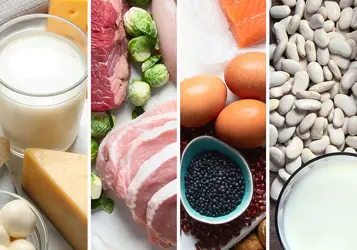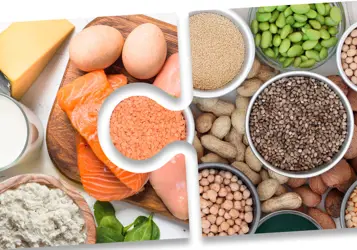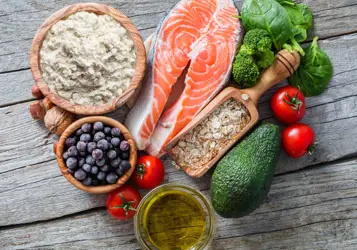The freedom to lead an active, independent life is dear to everyone. Yet, the older we get and the more muscle function declines, the less we can take that freedom for granted. It’s the reason why muscle health is fundamental to graceful ageing. When the elderly lose the ability to take care of themselves, the costs are high – both for individuals and for society.
As the world population continues to get older, one of the most important questions we face right now is: how can we help the elderly retain their independence for longer? The answer has a lot to do with the protein in their diet – and, perhaps, also the more diverse nutritional needs of the coming 60+ generations.
The fact is that tomorrow’s elderly will differ from elderly today. Compared to their parents and grandparents, fewer will have spent their lives doing a physically demanding job, and there is a higher risk of life-long obesity and lifestyle-related disease. Diets are also changing – with current trends showing a movement towards a more plant-based diet. While research interest in this area is growing, the impact of these altered life conditions on long-term muscle health is not yet known.
The impact of metabolic change
What we do know is that loss of muscle mass - known as sarcopenia - and metabolic change are natural consequences of the ageing process. While there are still few long-term studies of sarcopenia in elderly subjects, a nutritious, protein-rich diet is a recognised essential element in maintaining muscle mass and mobility for as long as possible.
Today, the recommended daily protein intake for adults over 60 is 1.1 to 1.3g1,2 of protein per kilo body weight. This is higher than the recommended 0.8 to 0.83g per kilo body weight for younger healthy adults2 and reflects the change in body protein turnover and a potential decline in the ability to absorb protein with age. However, ensuring this level of protein intake can be challenging.
Tackling smaller appetites
A major problem is that the ageing process compromises the ability to taste and smell, encouraging a smaller appetite. It has also been suggested that elderly people are more sensitive to the satiating effect of the anorexigenic hormone cholecystokinin (CKK), which suppresses hunger and food intake.
Both factors lead to so-called anorexia of ageing, a primary contributor to under-nutrition and physical disability. Consequently, protein deficiency is common, with many eating less than half the recommended minimum of 30g protein per meal.
Quality as well as quantity
Manufacturers of food and beverage products for the elderly have a critical role to play in overcoming these issues. Here, the quantity and quality of the proteins in their formulations are equally relevant considerations.
While quantity is important because older people simply need more protein to keep their muscles in shape, quality is about the availability of indispensable amino acids – amino acids not synthesised in the body and which must be included in the diet. This is a factor that varies depending on whether the protein is from an animal or plant-based source. Due to the current trend towards more vegetarian and flexitarian diets, the question of protein quality has become increasingly significant.
Until now, the Protein Digestibility Corrected Amino Acid Score (PDCAAS) has been the most widely recognised measurement of protein quality. However, a new gold standard for protein quality is increasingly coming into play. This is the Digestible Indispensable Amino Acid Score (DIAAS), which determines ileal amino acid digestibility and, as such, is a more specific measure of the quality differences between proteins sources. The international scientific collaboration PROTEOS is currently building a large dataset for the amino acid digestibility of food proteins to increase the practical application of DIAAS.
Meeting all nutritional needs
According to DIAAS, dairy proteins are among the richest sources of indispensable amino acids that are easy to digest and well absorbed. At the same time, the method provides a foundation for ensuring nutritional needs are met when other proteins with a lower content of indispensable amino acids are combined in optimised protein blends.
The big question that remains is whether all proteins can meet the needs of older adults. Today, there is solid evidence that the amino acid leucine plays a special role in maintaining muscle mass during ageing. However, we still need more scientific studies to confirm this.
At Arla Foods Ingredients, sarcopenia and its prevention through the development of nutritional solutions are an ongoing research focus. Protein quality and underlying metabolic responses are key areas of interest, which we are exploring through our involvement in the MiPUAge and PROTEOS research projects, for example.
One of the people who knows most about the protein quality requirements of the global population is Professor Daniel Tomé from AgroParisTech in France and a former member of the FAO/WHO/UNU Expert Committee that determines recommendations for protein intake.
Professor Tomé is the author of the next blog post on protein requirements for healthy ageing.
References:
[1] Protein and amino acid requirements in human nutrition: report of a joint FAO/WHO/UNU expert consultation. WHO (2007)
[2] Nordic Nutrition Recommendations 2012 - Integrating nutrition and physical activity; 5th ed. Nordic Council of Ministers (2014)
This blog contains material and information intended for B2B customers, suppliers and distributors, and is not intended as information to the final consumers.
























